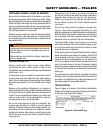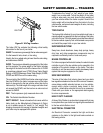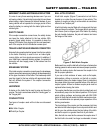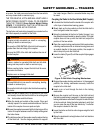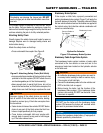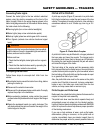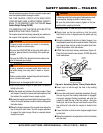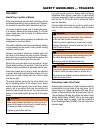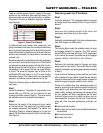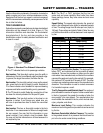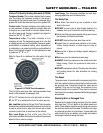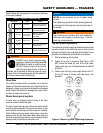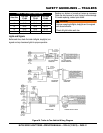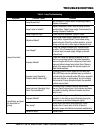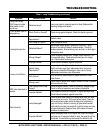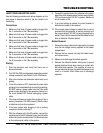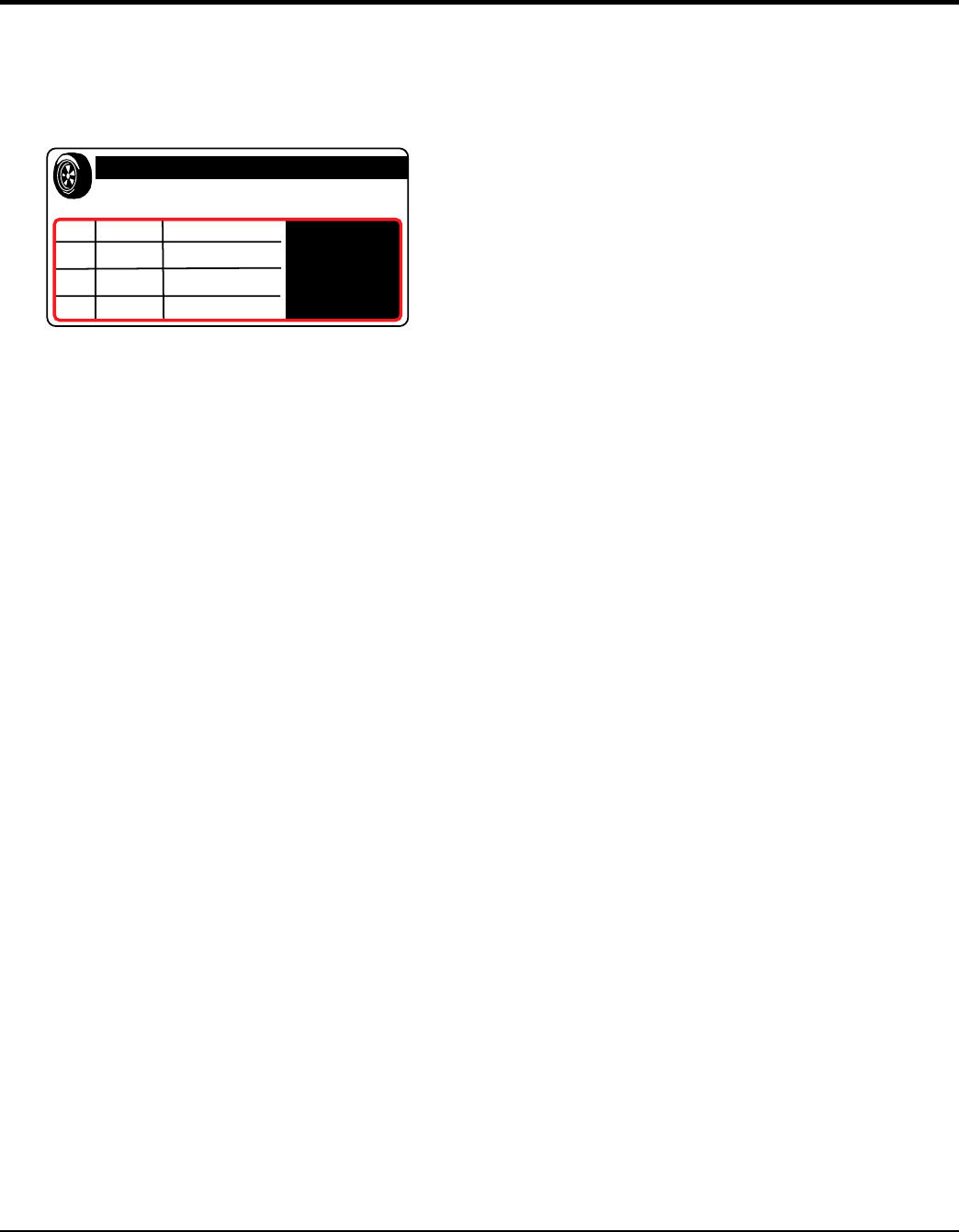
MLT25 SERIES LIGHT TOWER • OPERATION MANUAL — REV. #0 (11/28/12) — PAGE 37
SAFETY GUIDELINES — TRAILERS
There is a vehicle placard (Figure I) located in the same
location as the certifi cation label described above. This
placard provides tire and loading information. In addition,
this placard will show a statement regarding maximum
cargo capacity.
Figure I. Trailer Tire Placard
If additional work items (hoses, tools, clamps etc.) are
going to be added to the trailer, be sure they are distributed
evenly to prevent overloading front to back and side to side.
Heavy items should be placed low and as close to the axle
positions as reasonable. Too many items on one side may
overload a tire.
Excessive loads and/or underinfl ation cause tire overloading
and, as a result, abnormal tire fl exing occurs. This situation
can generate an excessive amount of heat within the tire.
Excessive heat may lead to tire failure. It is the air pressure
that enables a tire to support the load, so proper infl ation
is critical. The proper air pressure may be found on the
certifi cation/VIN label and/or on the Tire and Loading
Information placard. This value should never exceed the
maximum cold infl ation pressure stamped on the tire.
Perform the following steps to determine the load limit of
your trailer.
Step 1.
Locate the statement, “The weight of cargo should never
exceed XXX kg or XXX lbs.,” on your vehicle’s Tire and
Loading Information placard (Figure I). This value equals
the available amount of equipment load capacity.
Step 2.
Determine the weight of the equipment being loaded
on the tow vehicle. That weight may not safely exceed
the available equipment load capacity. The trailer’s Tire
Information Placard is attached adjacent to or near the
trailer’s VIN (Certifi cation) label at the left front of the trailer
(See Figure I).
The weightof cargo should never exceedXXX kg. Or XXX lbs
.
TIRE
FRONT
REAR
SPARE
SIZE
COLDTIRE PRESSURE
TIRE AND LOADING INFORMATION
SEE OWNER’S
MANUAL FOR
ADDITIONAL
INFORMATION
Determining Load Limit of Tow Vehicle
Step 1.
Locate the statement, “The combined weight of occupants
and cargo should never exceed XXX lbs.,” on your vehicle’s
placard.
Step 2.
Determine the combined weight of the driver and
passengers who will be riding in your vehicle.
Step 3.
Subtract the combined weight of the driver and passengers
from XXX kilograms or XXX pounds.
Step 4.
The resulting fi gure equals the available amount of cargo
and luggage capacity. For example, if the “XXX” amount
equals 1400 lbs. and there will be fi ve 150 lb. passengers
in your vehicle, the amount of available cargo and luggage
capacity is 650 lbs. (1400-750 (5 x 150) = 650 lbs.).
Step 5.
Determine the combined weight of luggage and cargo
being loaded on the vehicle. That weight may not safely
exceed the available cargo and luggage capacity calculated
in Step 4.
If your vehicle will be towing a trailer, load from your trailer
will be transferred to your vehicle. Consult the tow vehicle’s
manual to determine how this weight transfer reduces the
available cargo and luggage capacity of your vehicle.
Studies of tire safety show that maintaining proper tire
pressure, observing tire and vehicle load limits (not carrying
more weight in your vehicle than your tires or vehicle can
safely handle), avoiding road hazards and inspecting tires
for cuts, slashes and other irregularities are the most
important things you can do to avoid tire failure, such as
tread separation or blowout and fl at tires. These actions,
along with other care and maintenance activities, can
also:
Improve vehicle handling.
Help protect you and others from avoidable breakdowns
and accidents.
Improve fuel economy.
Increase the tire life.



